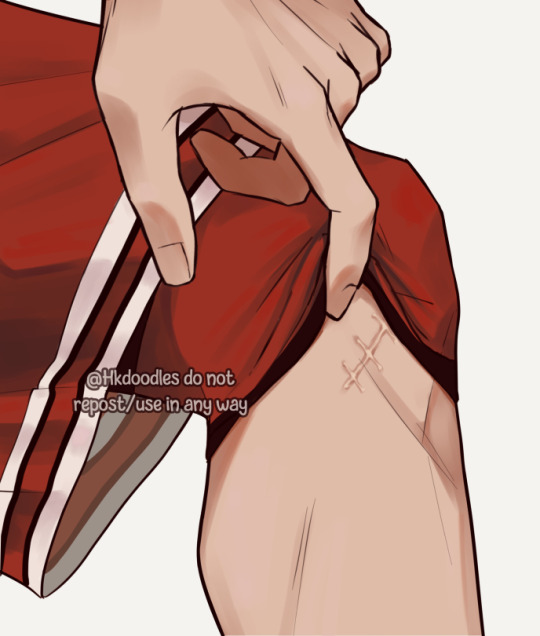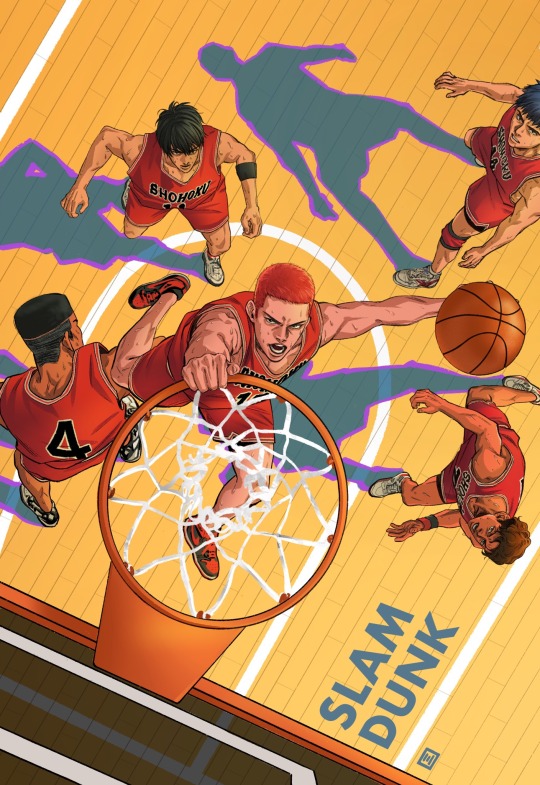#shohoku
Text
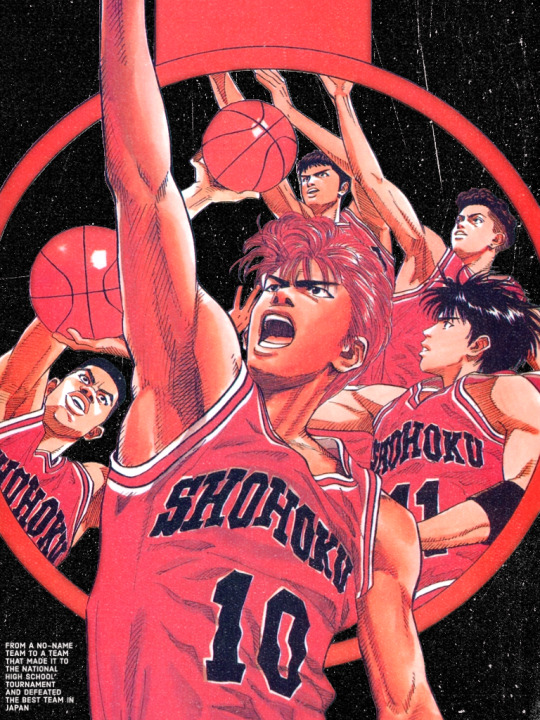

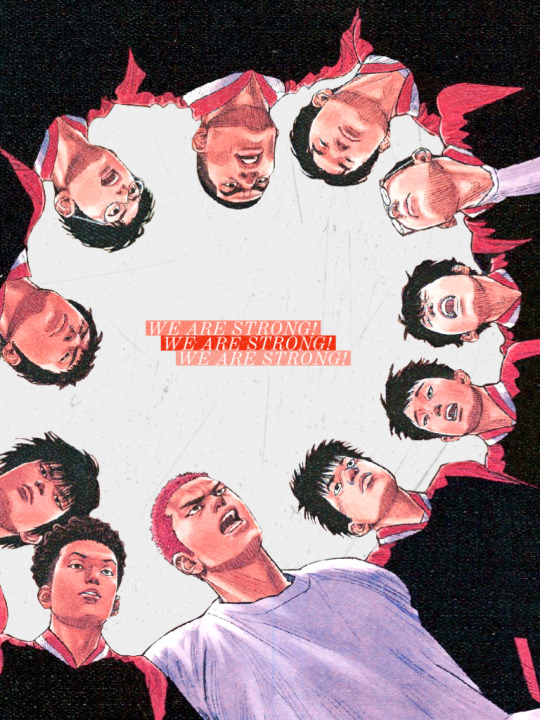
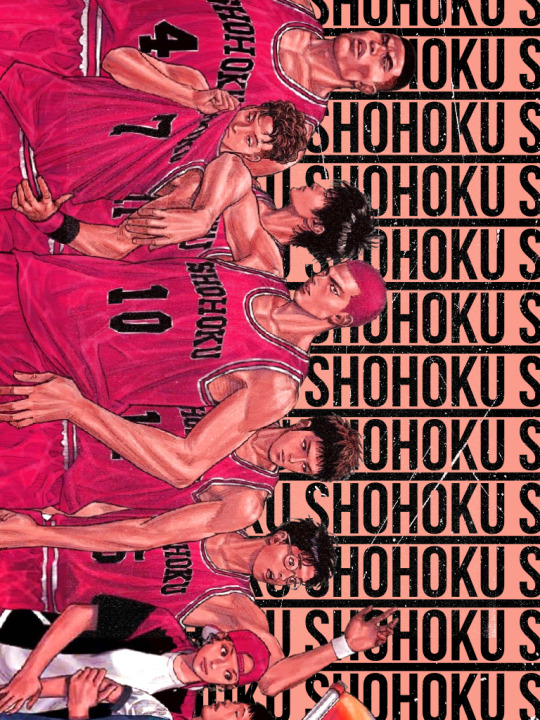

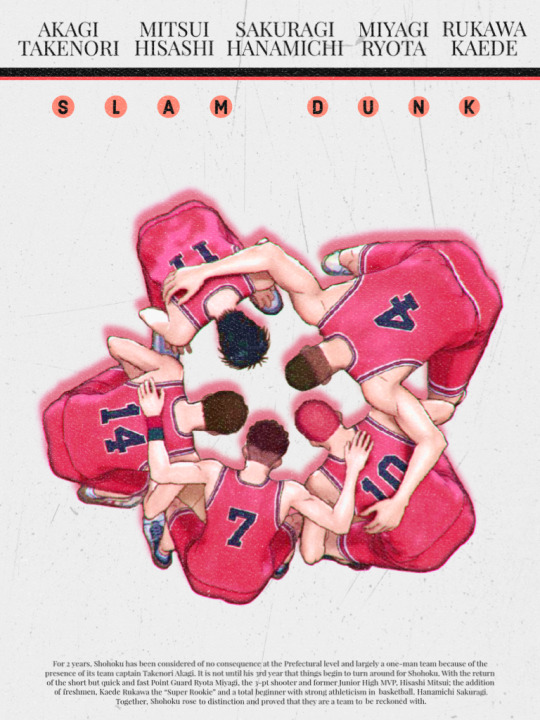
SHOHOKU ★
#just had to make another one with the whole team#i love them sm#slam dunk#shohoku#sakuragi hanamichi#rukawa kaede#miyagi ryota#mitsui hisashi#akagi takenori#slamdunkedit#dailysportsanime#fysportsanime#anisource#animangaboys#shounenedit#bluee
313 notes
·
View notes
Text
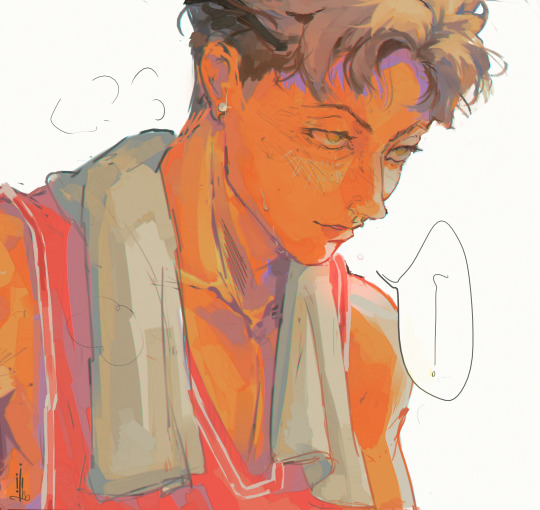
ryo-chan.
276 notes
·
View notes
Text
physical touch in slam dunk
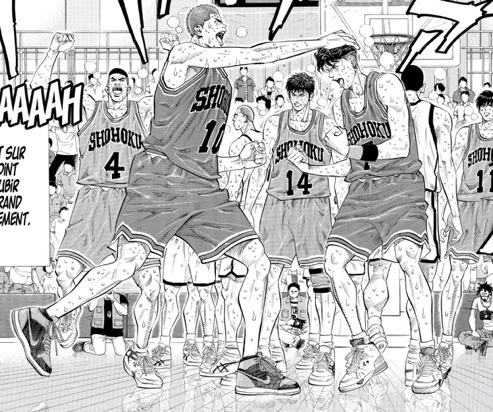
There is a big difference between the dynamics of friendships involving two girls, compared to a friendship with two boys. Girls are more likely to be communicative with how they appreciate each other. Boys don’t communicate this verbally, due to not wanting to come off as “cheesy” or “corny”. Instead, they show their affection/appreciation towards each other through physical touch. While not all guys are like this, a lot of boys are very touchy with each other, even coming off as gay at times.
Slam Dunk presents an accurate portrayal of male friendships. Their relationships with each other reflects on their age and maturity, and I believe it is part of why Shohoku and their dynamic as a team is so likable.
Something that I believe is notable is that the boys aren’t emotionally vulnerable with each other. Both Ryota Miyagi and Hanamichi Sakuragi are shown to have rough backgrounds, but neither of them are shown to tell their teammates about it. And they aren’t visibly depressed in front of the team.
I think the most emotionally vulnerable moments are from Mitsui and Akagi, who are both the oldest of the team.
Mitsui, who had hid his feelings of wanting to go back to basketball, finally broke down when Anzai walked back into the gym. Mitsui clearly did not intend to break down like this, I think he was just caught in the moment. The guys didn’t say anything about this, partially because they were still pissed at Mitsui for what happened, but also because they probably wouldn’t have known how to handle that at the moment.

The moment in the series to me that signified the most about how the boys aren’t vulnerable to each other was when Akagi cried, and said that the team was amazing. The guys didn’t comfort him, but instead were like “Why you crying?” and then went on to make fun of him. I think this is realistic compared to other series where the guys are all comforting each other, as they are teen boys and they don’t want to come off as soft.
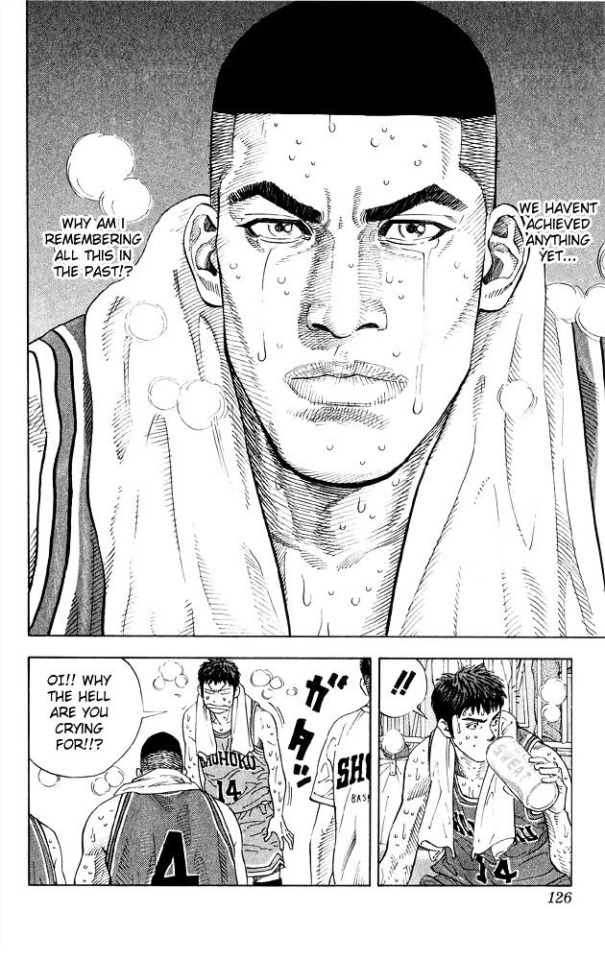

Another vulnerable moment in the series was when Miyagi and Sakuragi both cried in front of each other because of their bad luck with girls. This wasn’t intentional either, and I think it was the result of the heat of the moment.

Instead of being affectionate through words, physical touch is used to show the boys’ friendliness with each other.
An example of this is during their games. When the team scores, they high five each other, fist bump, or pat each other. While this is typical behavior for teams, it is used to show Rukawa growing closer to the team, as he ends up engaging in this as well.
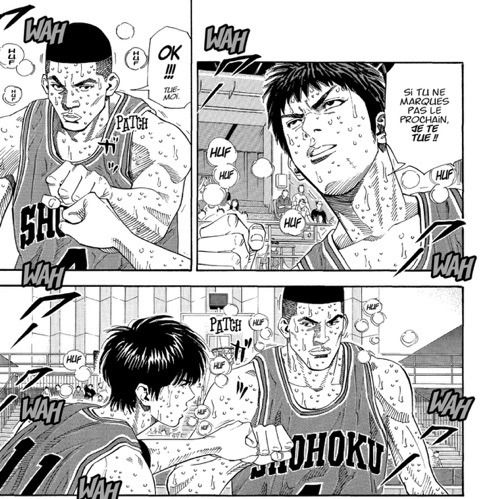
Additionally, when Shohoku lost against Kainan, Sakuragi cried. Akagi doesn’t say anything to comfort him in particular, but he pats Sakuragi and walks with him. I think this showed his care for Sakuragi, and he felt bad seeing him like that, it just wasn’t portrayed with words.
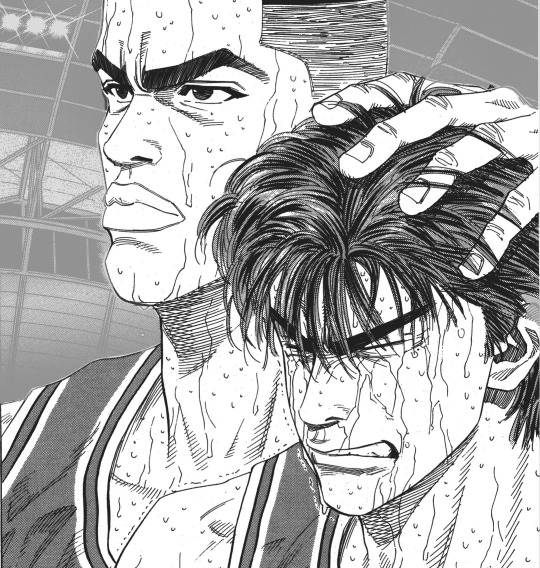
And when Akagi cried after winning against Ryonan, Sakuragi wraps his arm around Akagi and tells him to come line up with him. Again, nothing particularly comforting is said verbally, but it’s shown through actions.

Another big moment, arguably one of the biggest in the series, was Sakuragi and Rukawa going up to each other and high fiving after winning against Sannoh. Rukawa is shown before this to have high fived or fist bumped other members of the team, but not Sakuragi. Due to their “rivalry”, the two didn’t say anything and just looked at each other for a second before turning away. However, their high five signified how the two had grown close, as teammates and as friends.
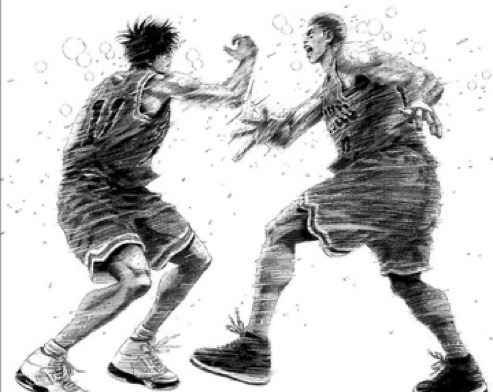
Showing emotional vulnerability and closeness through physical touch is very effective and provides a sense of realism, and I believe that Slam Dunk would not have been as strong of a series if the physical touch between the team was not presented.
#slam dunk#スラムダンク#headcanon#slam dunk anime#anime and manga#blog#hanamichi#sakuragi hanamichi#hisashi mitsui#takenori#takenori akagi#rukawa#kaede rukawa#miyagi ryota#ryota miyagi#character essay#character analysis#essay writing#shohoku#inoue
512 notes
·
View notes
Text
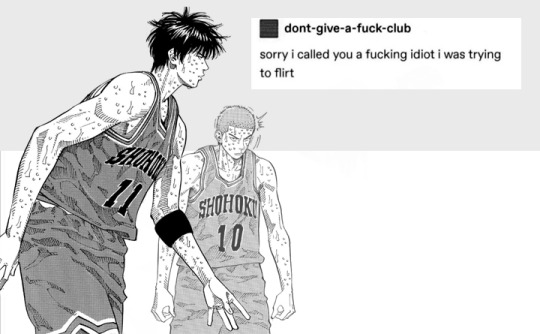
184 notes
·
View notes
Text
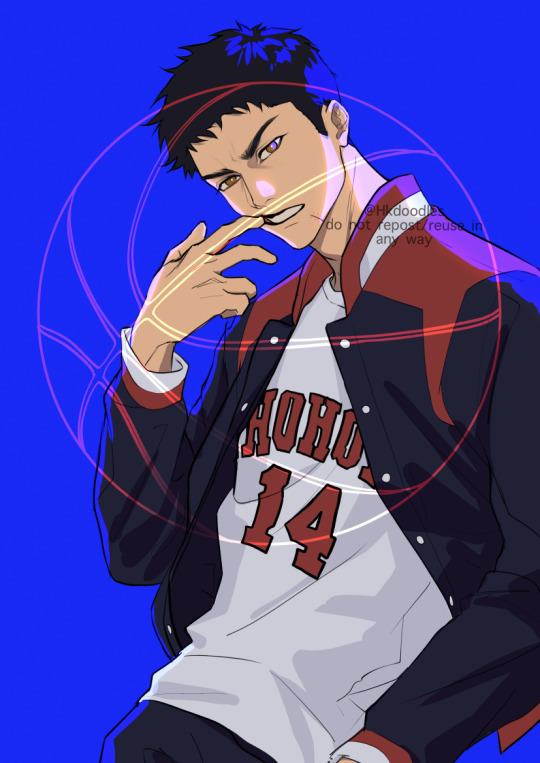
New teeth
#my art#anime art#hkdoodles#artists on tumblr#digital art#illustration#slam dunk#the first slam dunk#mitsui hisashi#shohoku#sports anime#sakuragi hanamichi#kaede rukawa
318 notes
·
View notes
Text
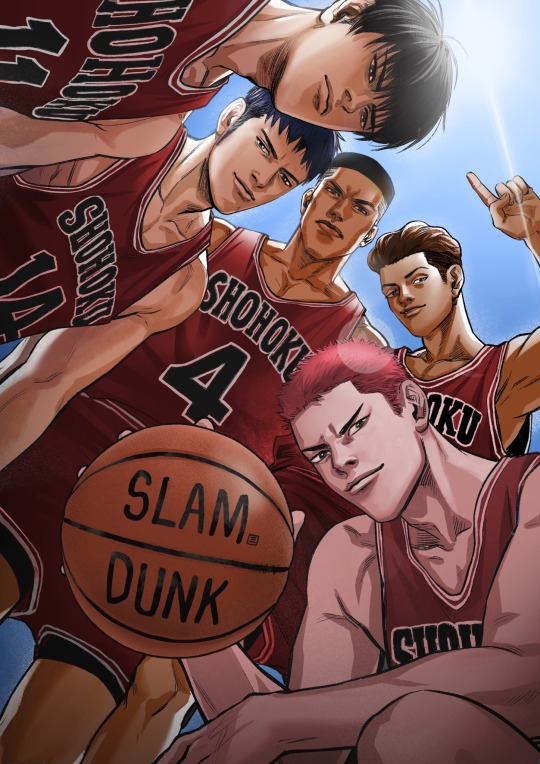
#slam dunk#the first slam dunk#shohoku#sakuragi hanamichi#rukawa kaede#akagi takenori#miyagi ryota#mitsui hisashi#illustration#fanart
380 notes
·
View notes
Photo


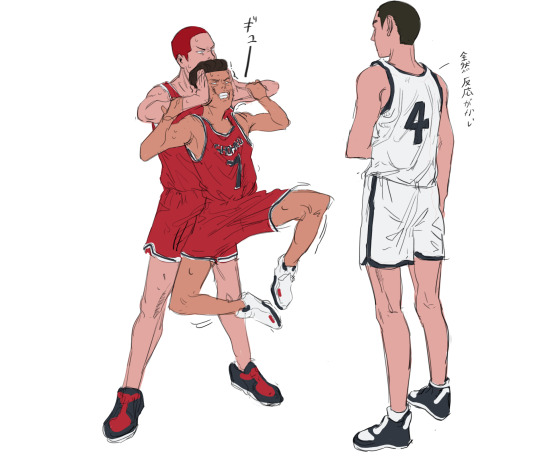
teamwork makes the dream work
yeehaw
301 notes
·
View notes
Text
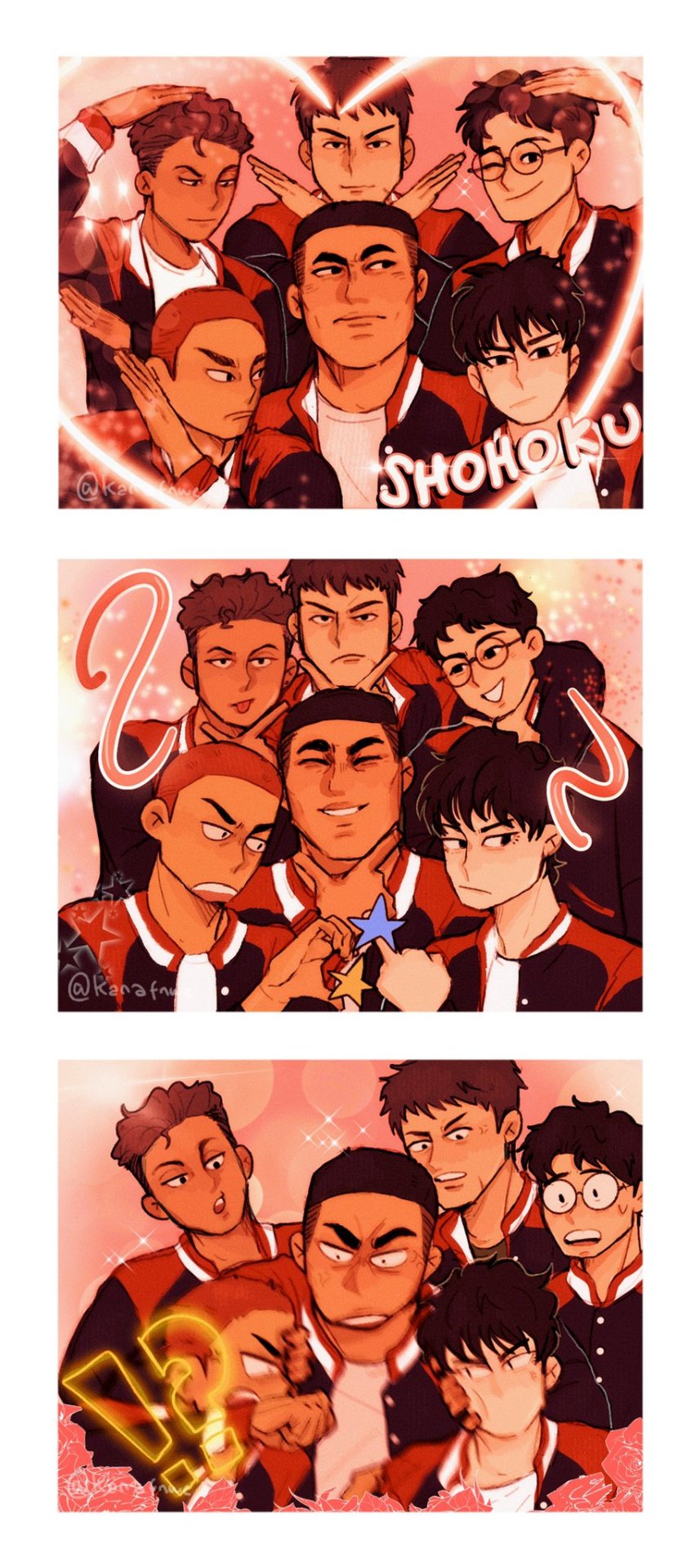
📸
#shohoku#slam dunk#the first slam dunk#my art#akagi takenori#mitsui hisashi#kogure kiminobu#sakuragi hanamichi#rukawa kaede#miyagi ryota
392 notes
·
View notes
Text


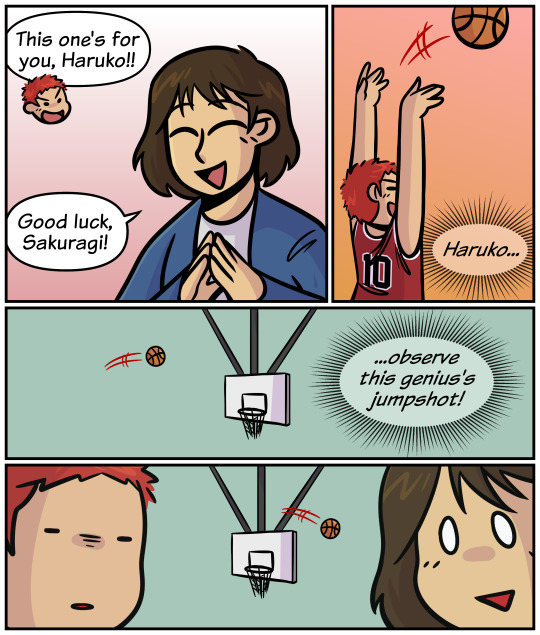
balling‼️‼️‼️
[id in alt!]
#never ask me to draw proper basketball poses and/or Things ever btw bc i Will fail#contra art#fanart#comic#slam dunk#sakuragi hanamichi#akagi takenori#haruko akagi#mitsui hisashi#ryota miyagi#rukawa kaede#the first slam dunk#shohoku#takenori akagi#miyagi ryota#hanamichi sakuragi#hisashi mitsui#slam dunk anime#takehiko inoue#inoue takehiko
104 notes
·
View notes
Text
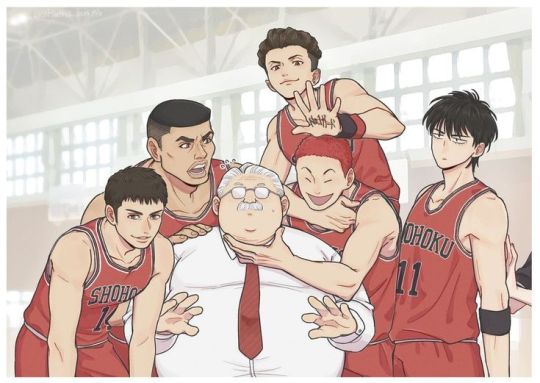
239 notes
·
View notes
Text

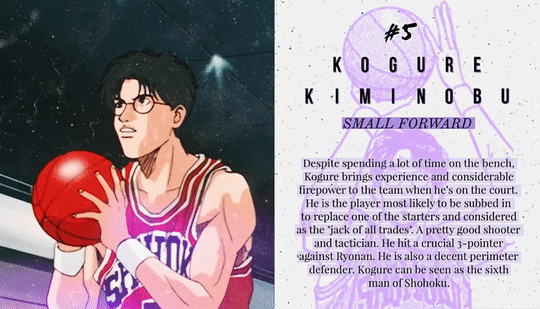
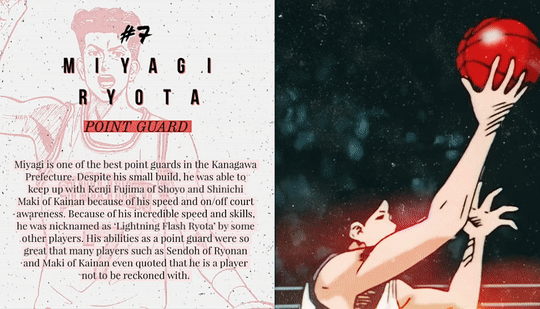

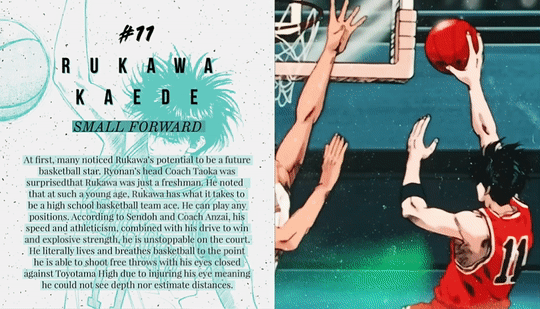

"Sakuragi brings rebounds and determination to the team. Miyagi brings speed and senses. Mitsui still has wisdom and his precious weapon. Rukawa has explosive strength and the determination to win. And the foundations that were continually up held by Akagi and Kogure, adding all these up, forms Shohoku."
#slam dunk#sakuragi hanamichi#rukawa kaede#miyagi ryota#mitsui hisashi#akagi takenori#kogure kiminobu#shohoku#slamdunkedit#fysportsanime#dailysportsanime#anisource#animangaboys#shounenedit#bluee
196 notes
·
View notes
Photo

Waiting for the Slam Dunk movie 😶
362 notes
·
View notes
Text
This is something I’ve thought about for a hot minute and i wanted to make an essay on it :))
socioeconomics in slam dunk
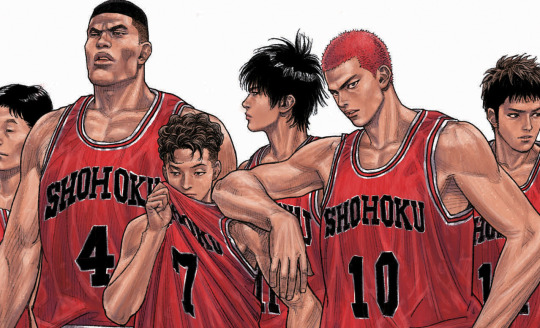
Like many things in life, basketball is a money sport. While inherent talent and skill is incredibly important, without the resources and opportunities to succeed, you can only get so far.
Throughout Slam Dunk, the importance of money and how it has a massive role in the world of basketball is not explicitly stated, but through the depictions of different teams in the series, it is prevalent.
We are first introduced to Shohoku High, a public school in Kanagawa. Shohoku is not a “poor” or “ghetto” school, but it is by no means a prestigious school either. Shohoku is initially depicted to be an ordinary school, but we are also shown how it has delinquency and school fights — especially among its protagonist and his “gang”
Shohoku’s normalcy is extended into its clubs, in particular, its basketball club. This club isn’t necessarily “run down” or “at risk of not existing anymore”, but aside from its coach (Coach Anzai, a man who used to coach the Japanese national team) and Akagi, their star center, Shohoku’s basketball team doesn’t have much going for it. Due to being a public school, Shohoku doesn’t have the money incentive to recruit star players (like some other schools I will mention soon), and most stars (besides Rukawa LOLLL) won’t go to an ordinary school “on a whim”
Moreover, the financial disparities become even more personal through the experiences of the characters themselves.
Sakuragi is hinted at to be poor, and the notion that basketball is “pay to play” is first explored through him in volume three, where Hikoichi (a player from Ryonan who “scouts” their competition) points out that it is strange Sakuragi doesn’t have basketball shoes, but he is quick to tell himself that it is likely because Sakuragi can’t afford them. Many basketball shoes, especially the Jordans that Sakuragi obtains throughout the series, are well over the $150-200 USD price range. While it is possible to play without basketball shoes, not having shoes that are designed for basketball automatically puts a player at a slight disadvantage.

This brings into question how resources—or the lack thereof—can subtly but significantly influence the trajectory of a player’s journey and a team’s potential for success. Sakuragi was lucky to have gotten practically free basketball shoes due to the generosity of a store owner, but those costs were his own out-of-pocket expenses. Unfortunately, a public school without special stipends for their programs cannot provide financial assistance to provide some of the resources to nurture potentially talented players.
While schools like Shohoku do not have funds to incentivize players or potential talent to come their way, they also do not have the funds to incentivize star coaches to coach at these schools. While Shohoku was able to have gotten Anzai (who wanted to retire by coaching highschool basketball), many public schools do not have that same luck.
In fact, the reason that two of the starting players, Mitsui and Miyagi, even decided to attend Shohoku was due to its coach, Coach Anzai. I think this goes to show that if a school invests in incentives like star coaches or a star basketball program, then these talented players will want to attend.

In terms of schools who provide ALL the incentives, and has thus led to star teams, I want to focus on Kainan, Shoyo, and (especially) Ryonan.
All are labelled as prestigious, private schools with amazing basketball programs, with Kainan having a stellar track record at nationals. But why is that? How did they get so.. good?
If I had to best answer this, money.
Ryonan is known to have scouted its star players, with Coach Taoka even scouting Sendoh and Fukuda from a junior high in Tokyo. For reference, Kanagawa is about two hours away from Tokyo, so Coach Taoka has to provide incentives for these boys to move to a different prefecture rather than staying in a city that likely has many powerhouse schools. In his case, these incentives would likely be full rides to Ryonan, as well as extra stipends to cover these student’s additional costs (such as food, money to move away, etc). Since Ryonan has the funding to do this, Coach Taoka is able to travel around to different areas, find these hidden talents, and bring them over to Ryonan. Public schools like Shohoku, who do not have allocated funds for sports programs, do not have this opportunity… and thus, are at an automatic disadvantage.
It is not explicitly stated how prestigious of a school Shoyo is, but having a program-related disadvantage affecting their players is prevalent. They do not have an official coach (for an unmentioned reason), and their star player Fujima has to coach his teammates as a result. Unfortunately, this additional responsibility prevented him from focusing on his own skills. I do believe Shoyo IS a school that has funding, but this highlights how a program being neglected directly impacts the strength of a team.
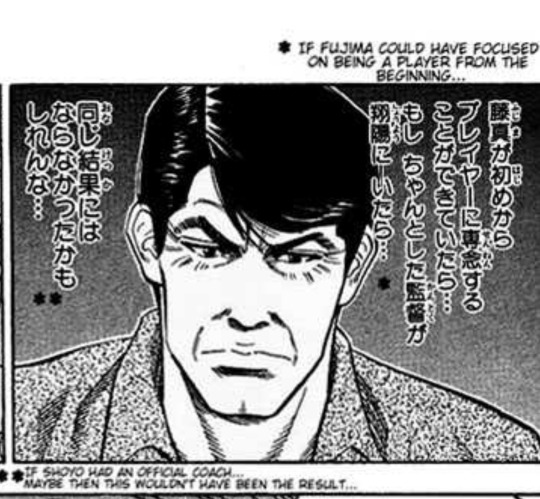
Another team I wanted to point out is Toyotama, a team that faced some of the most immense pressure in the entire series.
While Minami and Kishimoto, the team’s leaders, are characterized as “brute assholes”, it is shown that their irrational behavior stems from their pressure to perform well in order to potentially bring back their former coach, Coach Kitano.
Although Toyotama is 8th in the country, for the investors in their school’s basketball program, this isn’t enough. And thus… Coach Kitano was fired in the hopes of getting a coach who could lead the team to a better performance.
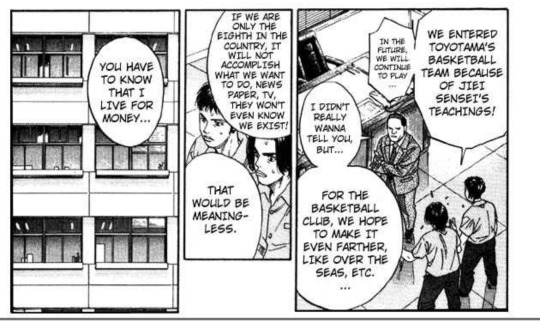
For these prestigious schools, their end goal is making a return on their investments. After all, what is the point of pouring all that money and resources for a team that doesn't even land them in the news?
While this is sad, it is very realistic. And as a result... even though Toyotama has a prestigious program, they felt even more pressure to *make a return." and this pressure poured into the team and their behavior.
However, the school that truly encapsulates the opportunities that money and resources provide for their players is Sannoh Technical High School.
Sannoh is practically a world class basketball team, with "anyone in Japan who gives a damn about basketball knows them", a team that had won nationals for years on end.
But how can one team be so good, let alone having a lasting legacy of greatness?
While their players are undoubtedly talented, Sannoh has invested aplenty into nurturing their players' talents.
Like Coach Taoka of Ryonan, Sannoh’s Coach Damoto scouts the best and brightest for their team. Eji Sawakita, although residing in a different prefecture, was discovered and scouted by Sannoh. While it isn't explicitly said how many players they scouted, or what incentives they provided Sawakita (aside from opportunities and their prestige), it can be inferred that Sannoh likely looks for the best and brighest to be apart of their teams.
In addition to the money and resources spent scouting, Sannoh provides their team with immense opportunities that most schools do not.
It is stated that Sawakita had been sent on a trip abroad to play basketball in America, and that he even learned new techniques during his trip. To say the least, a trip like that is... expensive. To send students to a country across the world just to play basketball is a hefty price to pay, and yet Sannoh was willing to pay it.

To prepare for Shohoku's match, Coach Damoto arranged a practice match with Sannoh alum who have a similar playstyle to Shohoku. While it is possible that these alum were willing to volunteer their time doing this, Damoto going out of his way to bring them all together and schedule that practice match is something that likely cost a significant amount to make happen. And it is certainly an opportunity that many schools would not provide.
Unfortunately, it is difficult to compete with money, and this sentiment is universal for any sector.
But what makes Shohoku’s victory over all these powerhouse schools, especially Sannoh, so shocking is the fact it is an “ordinary, no name school.” Theoretically, Shohoku would never beat a team like Sannoh, especially given the fact that Shohoku didn’t even have half the money, resources, and opportunities that Sannoh does.
Yet… Shohoku did it. And I think this part of why Slam Dunk is such a beautiful story: an ordinary team was, even for a moment, able to be extraordinary.
#slam dunk essay#slam dunk#スラムダンク#headcanon#slam dunk anime#anime and manga#blog#rukawa#hanamichi#sakuragi hanamichi#hisashi mitsui#shohoku#sannoh kogyo#sannoh#analysis#socioeconomics#sawakita#eiji sawakita#sawakita eiji#ryonan#sendoh akira#akira sendoh#sendoh#kichhou fukuda#the first slam dunk#slam dunk manga#fyp#in this essay i will#essay writing#hcs
64 notes
·
View notes
Text
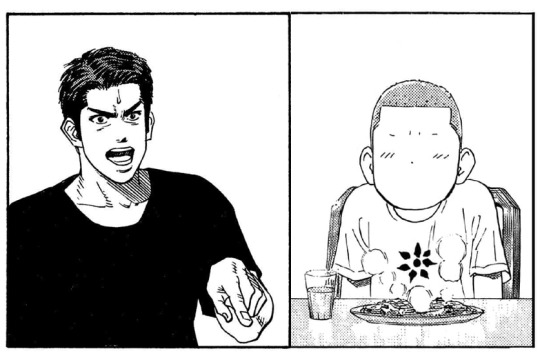

I just saw this Mitsui panel again and this is the only thing I could think of.
152 notes
·
View notes
